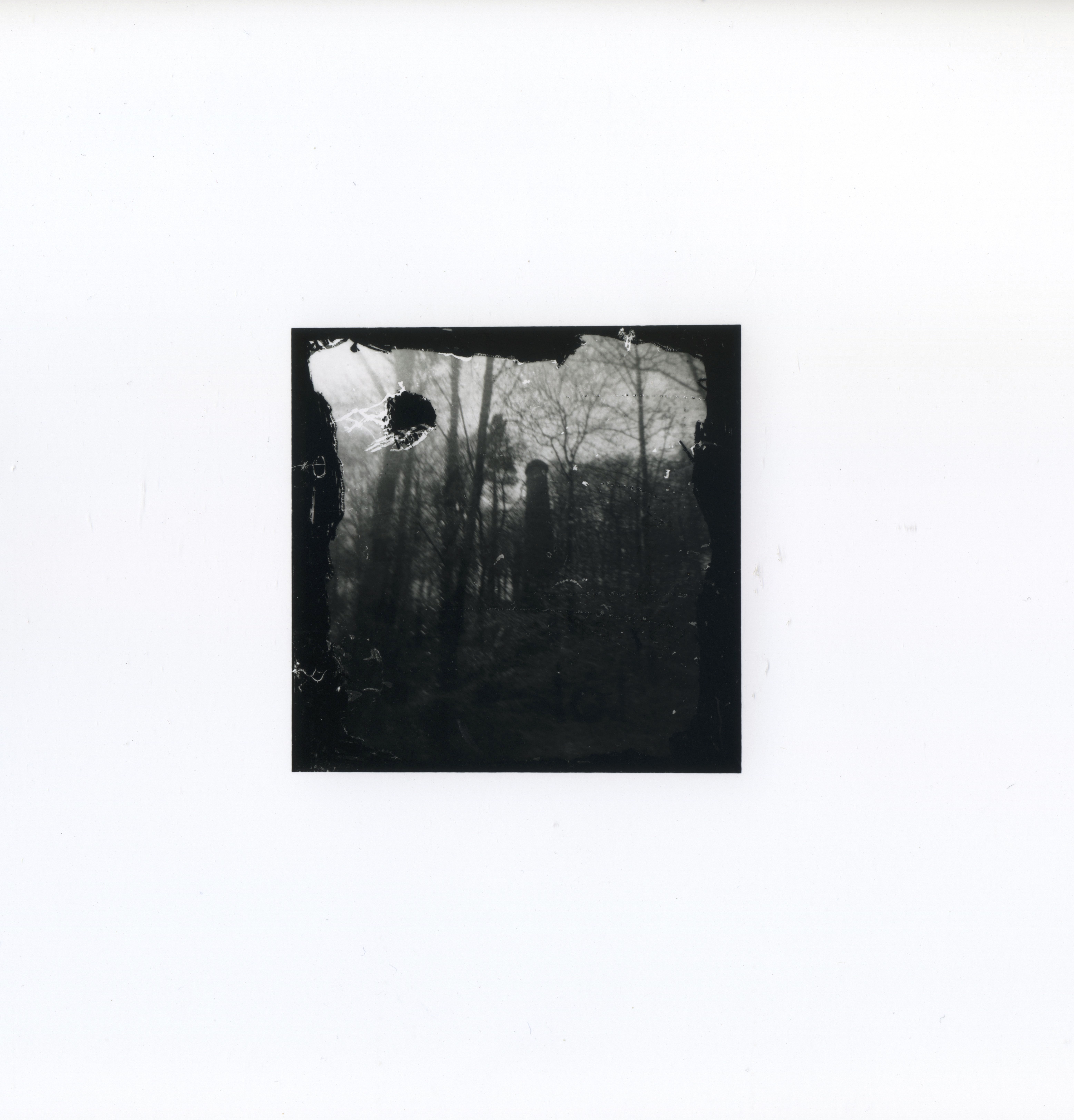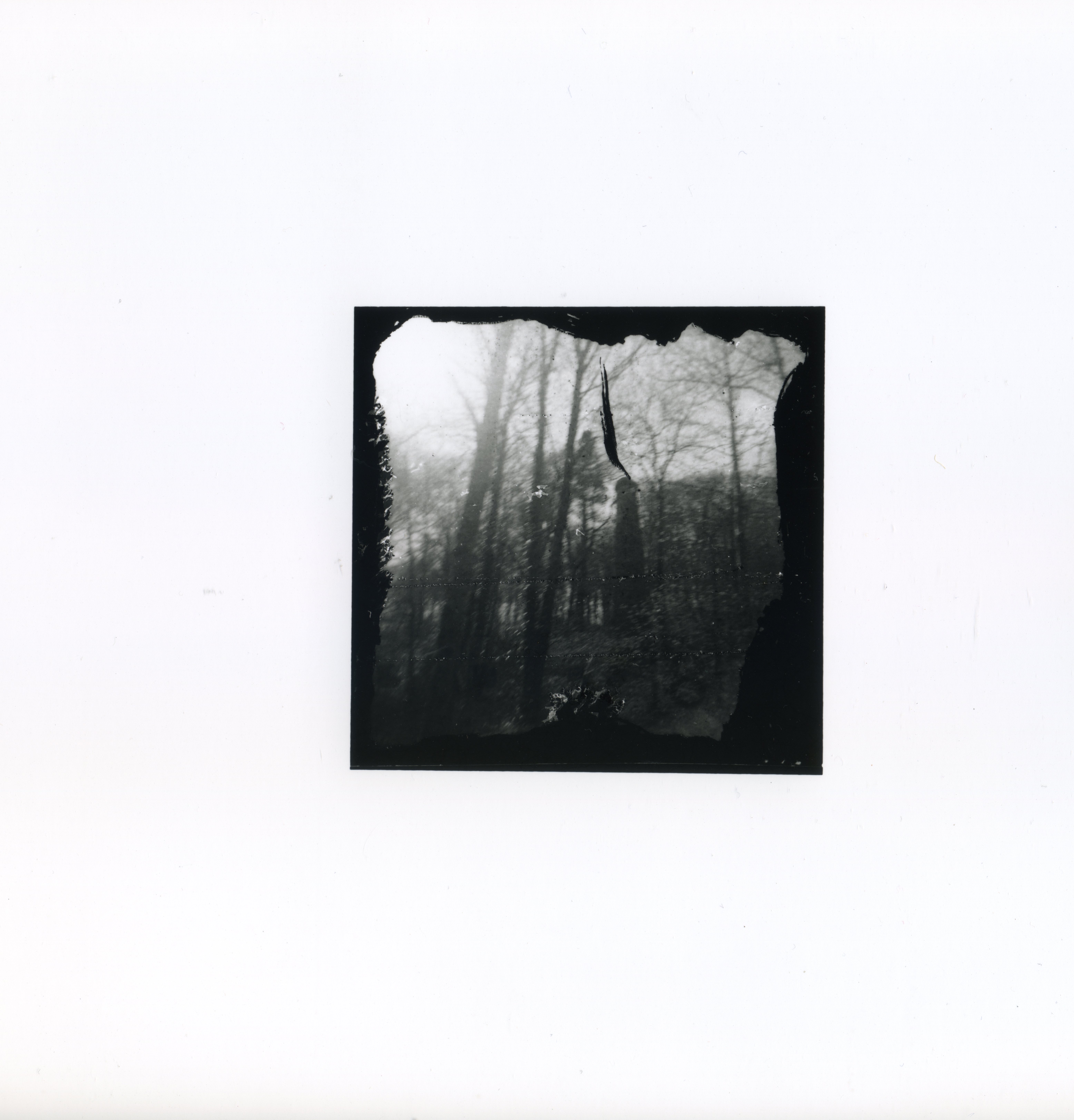Process 1
Using landscape water and elements into the photographic process.
Sites include an Victorican arsenic mine in Cornwall, An granite quarry in Dartmoor Devon, and the Berlin Wall
Calstock - Arsenic Mine
The genesis of my artistic practice can be traced back to a profound experience I had while sitting on the banks of the River Tamar, near the boundaries of Okeltor Consol, a Victorian mining complex known for its copper, tin, and arsenic operations. As I gazed upon the juxtaposition of the flowing grey-blue river and the lush greenery of Harewood Hill's trees, I discovered the remnants of the Victorian mine—a striking sight with open shafts and chimneys piercing through the forest canopy. While navigating a narrow path entwined among these tangible remnants of British industry, I came across warning signs that cautioned against entering due to arsenic contamination.
Eventually, I arrived at an area that seemed incongruous with its surroundings. It was marked by vibrant pools of bright red water, tainted with copper and arsenic waste, cutting through the once-lush foliage of trees, shrubs, and other plant life. The plants, now with brown exposed trunks and branches, lacked the vitality they once possessed, and the reddish hue of the copper arsenic solution left distinctive marks near the base of the trunks. I yearned to capture this landscape through my camera lens, but all I had at my disposal was black and white film. This presented a profound conundrum: how could I effectively convey the intricacies and temporality of this complex landscape?
My alternative approach involved an endeavor to capture the reddish hue of the copper arsenic using the black and white film. I hypothesized that by incorporating the red copper arsenic water into the developing process, the gelatin layer of the film would absorb the exact color present within the landscape, resulting in a representation that faithfully depicted the scene before me.









As I embarked on my artistic journey, I came to a profound realization that I was shaping and transforming my own understanding of the photographic discourse. In doing so, I recognized the potential for my work to contribute to the vast construct known as the Expanded Field of Photography. Despite initially perceiving my approach as a departure from established norms—a kind of "bastardization" of photography—I began to grasp, through both practical and theoretical exploration, that I was actually dismantling the boundaries of my own experiences and interpretations of the medium.
This process allowed for a de-centering of my own perception and opened up a collaborative space where the agency of the nonhuman landscape could manifest within the photographic film itself. Inspired by the concepts put forth by Deleuze and Guattari, I recognized a form of filiation at play—an arboreal or tree-like system that disrupted conventional skills and methods, ultimately legitimizing them as transformative paths of becoming and potent forces of artistic production (Deleuze and Guattari, 2008).
Merryvale - Garnite Quarry
Continuing my artistic exploration, I ventured to Merryvale, where I dedicated a significant portion of my third year in pursuit of my degree. Immersed in this location, I engaged in the collection of water samples and captured images of the quarry throughout various seasons. Specifically, I focused on collecting water from the basin of the quarry, seeking to incorporate its essence into my artistic process.
To accomplish this, I devised a unique film development method that enabled me to process films directly within the quarry basin, all while ensuring that no additional photographic chemicals would leak into the surrounding landscape. This approach allowed for an intimate and harmonious integration of the environment into the very fabric of the photographic medium.
During this transformative period, I also transitioned to utilizing large format cameras and film, recognizing their capacity to authentically capture the expansive and intricate nuances of the landscape. This shift in equipment further enhanced my ability to encapsulate the essence and grandeur of Merryvale, fostering a deeper connection between my artistic vision and the natural surroundings.





The Berlin Wall - Germany
I also experimented with this method of processing at different locations. on this occasion i photographed the Berlin wall, it was during winter, and therefore i collected sbow that had fallen on the wall as my fluid mixure to add to the photographic developer. as per chance of the snow melting in the photographic tank, only h
In my artistic exploration, I further expanded the boundaries of my processing method by experimenting with different locations. One notable instance took place at the Berlin Wall during winter. Inspired by the unique atmosphere of the season, I collected fallen snow from the wall itself to incorporate into my fluid mixture, which served as an unconventional addition to the photographic developer.
During the process, an unexpected occurrence unfolded. As the snow melted within the photographic tank, only half of the film was fully developed. This serendipitous outcome resulted in an intriguing visual effect—a portrayal of wall-like imagery appearing on the film, mimicking the very essence of the Berlin Wall itself. The partial development created a captivating juxtaposition, mirroring the fragmented nature and historical significance of the wall in the final photographic composition.alf of the film got developed, casuing wall like imagery in the film, minicing the wall itself.